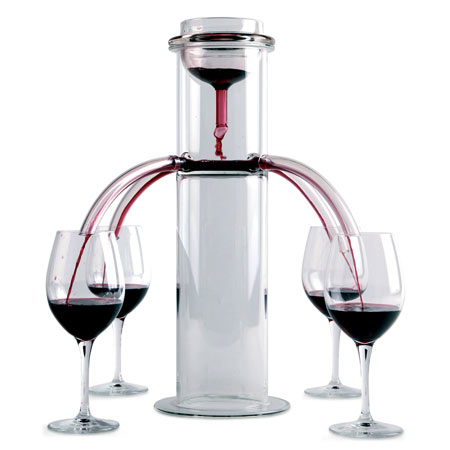
Applied Physics by Acquacalda
Italian design collective Acquacalda have designed a range of kitchen gadgets based on the laws of physics, including this device for pouring exactly equal amounts of wine into four glasses.
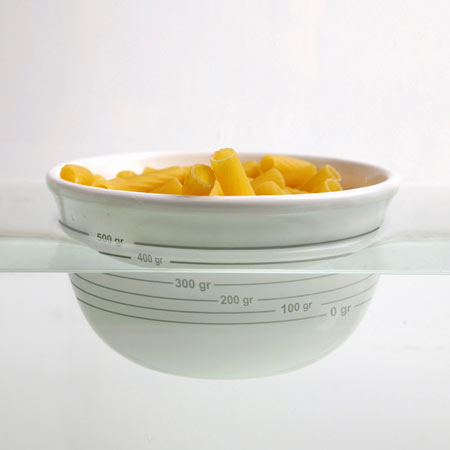
Called Applied Physics, the collection also includes a self-hydrating plant pot, a glass with a measuring reservoir, a bowl for weighing dry food in water and a vase that indicates the water level inside through its handle.
Top: One For All, All For One - Wine dispenser for table: a uniform flow of liquid out of the four holes allows to fill simultaneously and uniformly the glasses of all the diners. The Pascal principle: The pressure exerted on a fluid enclosed in a container is transmitted unchanged at any point of the fluid and at the walls of the container that contains it.
Above: Archimede's Scale - Graduated food bowl used as scale if immersed in water: the depth of immersion indicates the weight of the content. The Buoyancy: A body immersed (totally or partially) in a fluid receives a vertical boost called buoyancy (bottom-up) of intensity equal to the weight of a mass of fluid of shape and volume equal to the submerged part of the body. The point of application of buoyancy, called center of thrust, is on the same line as the pressure gradient which would be the center of mass of the portion of fluid that would occupy the space actually occupied by the immersed part of the body.
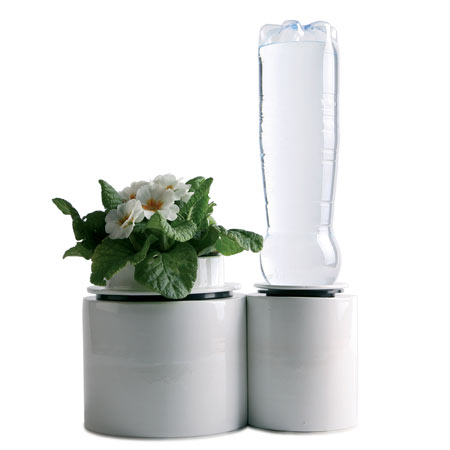
Above: Vasco - Container with water reserve: the passage of water between two vessels in communication allows the plant to hydrate itself if necessary, taking advantage of stock in the bottle. Also the lowering of liquid level in the bottle indicates water consumption and the need for refueling. Principle of communicating vessels: The principle of communicating vessels is the physical principle according to which a liquid inside two containers communicating with each other reaches the same level. The liquid doesn’t have a proper shape but takes the shape of the container that contains it. For this reason, if you pour a liquid in communicating containers, though different in shape, it gets at the same level in each containers.
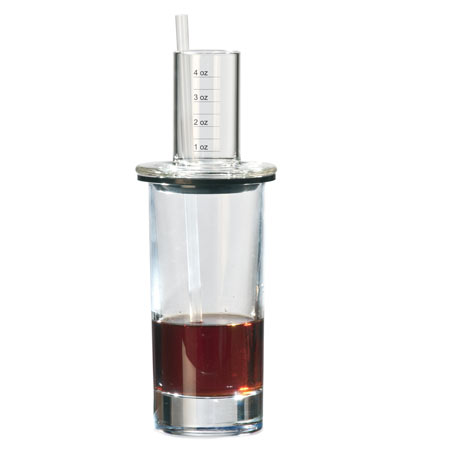
Above: Mix In Glass - Glass with dispenser for the preparation of cocktails: the graduated cap has a double drilling, a hole for the drinking straw and one for the passage of air/fluid; by closing with a finger the drinking straw inserted through the hole in the glass it is possible to dose the preparation necessary ingredients one by one. After the measurement of each ingredient, it is enough to free the drinking straw hole to make it fall into the glass. After repeating this operation for each ingredient it is possible, if necessary, to mix a cocktail by keeping the drinking straw hole re-sealed. After removing the cap from the glass, the cocktail is ready to be served. The atmospheric pressure: The atmospheric pressure is the pressure present at any point in the Earth's atmosphere. In most cases the atmospheric pressure value is equivalent to the hydrostatic pressure exerted by the weight of air present above the measuring point.
Here's some text from the designers:
APPLIED PHYSICS: To experience daily actions
Applied Physics in general is based on physical sciences fundamental truths and most important concepts, but is especially interested in the application of these scientific principles in practical systems. Applied Physics for design has led to direct design solutions particularly tangible and useful, allowing to transform everyday objects in scientific instrumentation.
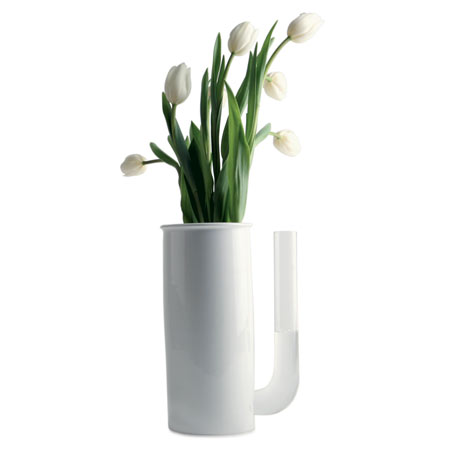
Above: Communicating Vase - Vase for cut flowers: the addition to the side of a ceramic vase of a transparent tube allows it to "communicate" constantly the level of water remaining inside it. Principle of communicating vessels: The principle of communicating vessels is the physical principle according to which a liquid inside two containers communicating with each other reaches the same level. The liquid doesn’t have a proper shape but takes the shape of the container that contains it. For this reason, if you pour a liquid in communicating containers, though different in shape, it gets at the same level in each containers.
Vases, bowls, shakers become instruments of direct knowledge without losing their original function; form, closely connected to function, stimulates the user’s curiosity and interactivity. As the object becomes intellectually stimulating, it triggers the concept of an enjoyable object; a collection of objects for different uses share a common language.
Acquacalda is a group of designers working in experimental and vanguardist design. The commitment is to make use of design as applied art with the intent to communicate and develop themes, to gather and show connections.
See also:
.
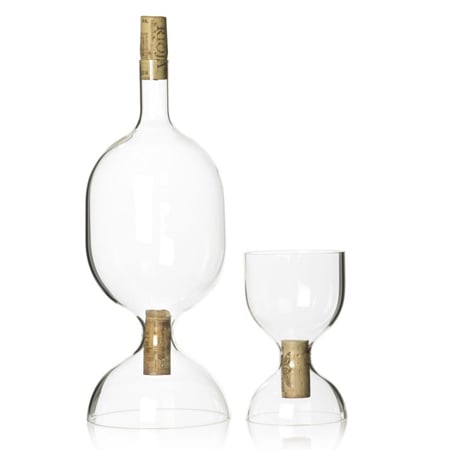 |
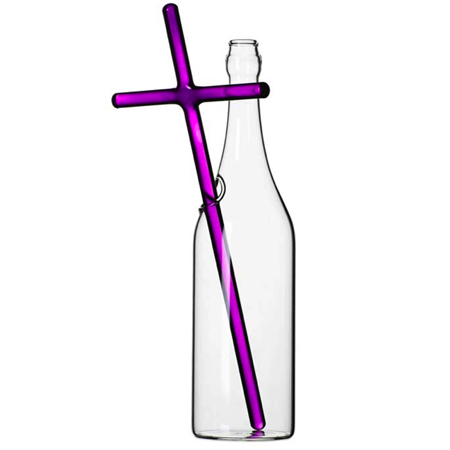 |
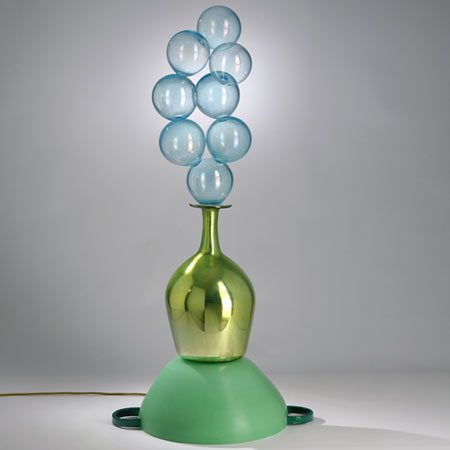 |
| Cru by Sebastian Bergne |
In Vino Veritas by Matali Crasset |
More design stories on Dezeen |